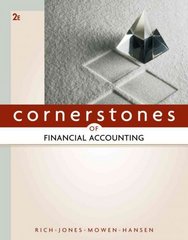Answered step by step
Verified Expert Solution
Question
1 Approved Answer
When a large ship approaches harbour it is usually assisted by smaller ships called tugs. Figure Q1 illustrates the relationship between such a large ship

When a large ship approaches harbour it is usually assisted by smaller ships called tugs. Figure Q1 illustrates the relationship between such a large ship (mess Ms) and two tugs (mass Mr and Mr). SHIP TUGI TUG 2 ROPE OROPE Figure Q1 Similar rope connect the tugs to each other and the ship. These ropes allow the tugs to pull the Ship. Tug I pulls with force Fn N and Tug 2 pulls with force Fr? N. The rope have the same clastic properties that can be represented by a spring constant of K N/m and viscous damping coefficient C N/m's. Hence the forward motion of these three coupled vessels can be described in terms of the displacement of the Ship ys m, the displacement of the Tug 1 yn m and the displacement of the Tug 2 yozm. (a) By considering the description given above, prove from first principles that the forward motion of these 3 vessels can be described by differential equations similar to those given below: (dy, dy M +K (x -)=0 dr dyr dy, dyna+K(2yn-y-Yr)-F, = 0 (ory do (yr. -Y)-F:=0 [12] dt M. dt di dt M dt By choosing suitable state variables, derive state equations for this system. [8] Provide the outline structure of a simulation program for this system using the MATLAB programming language. Include full details of the Derivative Section in suitable MATLAB code [10] Construct a block diagram that describes these dynamic relationships using commonly used blocks that can be found in a block-oriented simulation package such as SIMULINK [10] When a large ship approaches harbour it is usually assisted by smaller ships called tugs. Figure Q1 illustrates the relationship between such a large ship (mess Ms) and two tugs (mass Mr and Mr). SHIP TUGI TUG 2 ROPE OROPE Figure Q1 Similar rope connect the tugs to each other and the ship. These ropes allow the tugs to pull the Ship. Tug I pulls with force Fn N and Tug 2 pulls with force Fr? N. The rope have the same clastic properties that can be represented by a spring constant of K N/m and viscous damping coefficient C N/m's. Hence the forward motion of these three coupled vessels can be described in terms of the displacement of the Ship ys m, the displacement of the Tug 1 yn m and the displacement of the Tug 2 yozm. (a) By considering the description given above, prove from first principles that the forward motion of these 3 vessels can be described by differential equations similar to those given below: (dy, dy M +K (x -)=0 dr dyr dy, dyna+K(2yn-y-Yr)-F, = 0 (ory do (yr. -Y)-F:=0 [12] dt M. dt di dt M dt By choosing suitable state variables, derive state equations for this system. [8] Provide the outline structure of a simulation program for this system using the MATLAB programming language. Include full details of the Derivative Section in suitable MATLAB code [10] Construct a block diagram that describes these dynamic relationships using commonly used blocks that can be found in a block-oriented simulation package such as SIMULINK [10]
Step by Step Solution
There are 3 Steps involved in it
Step: 1

Get Instant Access to Expert-Tailored Solutions
See step-by-step solutions with expert insights and AI powered tools for academic success
Step: 2

Step: 3

Ace Your Homework with AI
Get the answers you need in no time with our AI-driven, step-by-step assistance
Get Started


